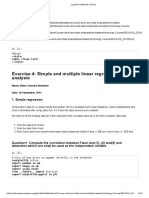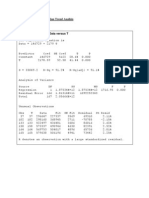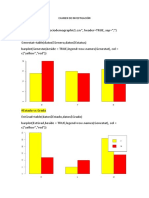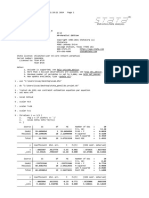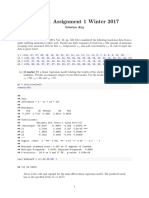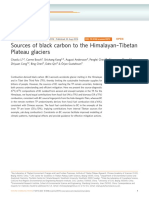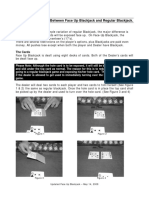0% found this document useful (0 votes)
95 views18 pagesHydrology Time Series Analysis
This document describes an analysis of annual mean runoff data from a station. The analysis includes:
1) Testing for trends using linear regression and finding a significant positive trend.
2) Removing the trend from the data by calculating the difference between observed and estimated values from the regression model.
3) Calculating the autocorrelation coefficient up to a time lag of 5 years and determining which lags are statistically significant by comparing to confidence limits.
Uploaded by
Bikas C. BhattaraiCopyright
© © All Rights Reserved
We take content rights seriously. If you suspect this is your content, claim it here.
Available Formats
Download as PDF, TXT or read online on Scribd
0% found this document useful (0 votes)
95 views18 pagesHydrology Time Series Analysis
This document describes an analysis of annual mean runoff data from a station. The analysis includes:
1) Testing for trends using linear regression and finding a significant positive trend.
2) Removing the trend from the data by calculating the difference between observed and estimated values from the regression model.
3) Calculating the autocorrelation coefficient up to a time lag of 5 years and determining which lags are statistically significant by comparing to confidence limits.
Uploaded by
Bikas C. BhattaraiCopyright
© © All Rights Reserved
We take content rights seriously. If you suspect this is your content, claim it here.
Available Formats
Download as PDF, TXT or read online on Scribd
/ 18
